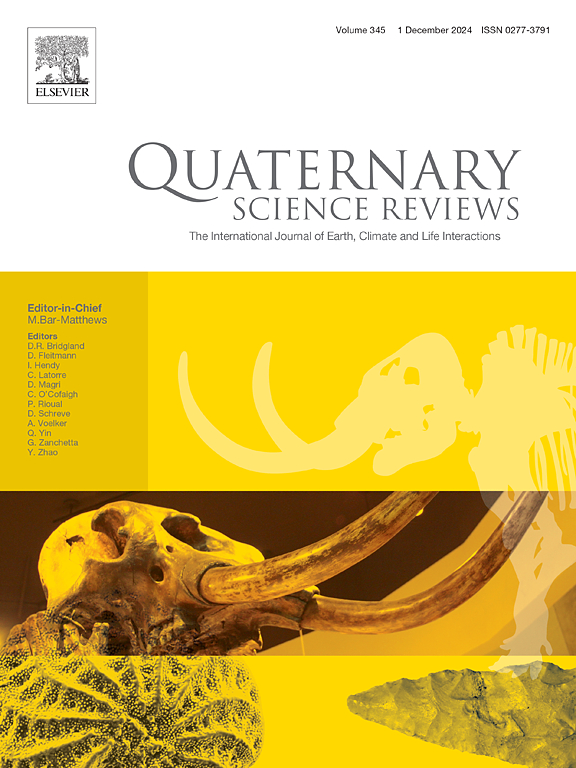Earliest sustained settlement by farmers and symbiotic relationship with foragers at high altitude on the Tibetan Plateau
IF 3.2
1区 地球科学
Q1 GEOGRAPHY, PHYSICAL
引用次数: 0
Abstract
Foragers had occupied high altitudes on the Tibetan Plateau (TP) since the Late Pleistocene. Millet farmers from the Middle Yellow River Valley migrated to TP during the Late Neolithic, but their settlements of over 2500 masl and interactions with indigenous foragers remain unclear. Multi-isotope (δ13C, δ15N, δ18O, and δ34S) analyses of animal remains from the Liujiazhai site (2630 masl, 5300–4700 cal.BP) on southeastern TP reveal continuous presence of managed animals (Sus, Canis), fed by millets-based food. By using isotopic values of domestic animals (dogs and pigs) as proxies for human diets, our study provides the earliest sustained settlement by farmers at high altitudes. A complex subsistence strategy was established involving millet cultivation, animal husbandry, hunting, and gathering. Combining archaeobotanical, zooarchaeological, isotopic and archaeological data during the Late Neolithic, we reconstruct the dispersal of farmers into southeastern TP and highlight their symbiotic relationship with indigenous foragers when they entered eastern TP.
青藏高原高海拔地区最早持续的农民定居及其与采集者的共生关系
自晚更新世以来,觅食者一直占据着青藏高原(TP)的高海拔地区。新石器时代晚期,黄河中游流域的黍农迁徙到青藏高原,但他们在海拔2500米以上的地方定居以及与当地觅食者的互动关系仍不清楚。对大埔东南部刘家寨遗址(海拔 2630 米,公元前 5300-4700 年)的动物遗骸进行的多同位素(δ13C、δ15N、δ18O 和 δ34S)分析显示,以黍为食的管理动物(Sus、Canis)持续存在。通过使用家畜(狗和猪)的同位素值作为人类饮食的替代物,我们的研究提供了农民在高海拔地区持续定居的最早证据。一种复杂的生存策略已经形成,包括小米种植、畜牧业、狩猎和采集。结合新石器时代晚期的考古植物学、动物考古学、同位素和考古学数据,我们重建了农民进入大埔东南部的扩散过程,并强调了他们进入大埔东部时与当地觅食者的共生关系。
本文章由计算机程序翻译,如有差异,请以英文原文为准。
求助全文
约1分钟内获得全文
求助全文
来源期刊

Quaternary Science Reviews
地学-地球科学综合
CiteScore
7.50
自引率
15.00%
发文量
388
审稿时长
3 months
期刊介绍:
Quaternary Science Reviews caters for all aspects of Quaternary science, and includes, for example, geology, geomorphology, geography, archaeology, soil science, palaeobotany, palaeontology, palaeoclimatology and the full range of applicable dating methods. The dividing line between what constitutes the review paper and one which contains new original data is not easy to establish, so QSR also publishes papers with new data especially if these perform a review function. All the Quaternary sciences are changing rapidly and subject to re-evaluation as the pace of discovery quickens; thus the diverse but comprehensive role of Quaternary Science Reviews keeps readers abreast of the wider issues relating to new developments in the field.
 求助内容:
求助内容: 应助结果提醒方式:
应助结果提醒方式:


